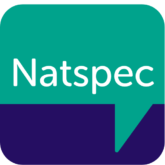A self-report outcome measure for use across disciplines with students who have the cognitive ability to engage in a supported self-assessment process.
You can access the COPM on their website.
Overview
The COPM was created in Canada in 1991 by Law M, Baptiste S, Carswell A, McColl MA, Polatajko HJ, Pollock N as an outcome measure of occupational performance in everyday living over time, as part of a project commissioned by the National Health Research Development Program and the Canadian Occupational Therapy Foundation. It is based on a self-evaluation of performance and satisfaction by the client, undertaken with support from a therapist.
This tool enables the client to identify what is meaningful to them to work on. It encourages self-awareness, focused goal-setting and self-reflection. It focuses on the person’s perception of their performance and how satisfied they are rather than measuring improvement in function. It can support building therapeutic relationships, organising a client’s priorities and motivating them to work towards their own goals.
Purpose of tool
The COPM is an individualised measure, administered by semi-structured interview with a therapist to:
- identify occupational performance problems under the broad headings of self-care, productivity and leisure
- rate the performance of each activity using a 10-point scale
- select top five problems most important to the individual
- self-evaluate their current performance and satisfaction with current performance using the 10-point scale
- obtain outcome data through readministering the interview after an appropriate interval and analysing changes in scores over time.
Who is the tool for?
The COPM is designed to be used by occupational therapists but could be adapted for use in any discipline. It is a self-report outcome measure for use with clients who have the cognitive ability to engage with identifying areas they are having difficulty with and to rate their performance and how important the activity is to them. This makes it most suitable for clients with a mild to moderate learning disability. It is not suitable for clients with profound and multiple learning disabilities.
The tool can be completed by a multidisciplinary team, with the client and multiple carers or staff to gain a range of views and perspectives.
Notes on use
- For clients with communication difficulties, the questionnaire and interview process could be easily adapted to increase engagement while remaining valid. For example, therapists might adapt
- the scale to 1-5 and/or use symbols/faces
- the wording to improve understanding
- their interview style to be more supportive.
- Although the information accompanying the tool suggests it can be used as a carer report form on behalf of clients less able to engage with it, using it in this way may undermine client-centred practice.
- Use of the COPM helps capture student voice for EHCP aims and outcomes.
- It provides quantitative data which can be supported by qualitative data if you capture the learners’ narrative throughout the process.
Training
There is no formal COPM training required but it is important that therapists using the measure have the necessary skills to administer it. Any internal training should focus on the importance of facilitating and capturing the client’s voice.
There is a one-off fee for purchasing the manual and measure.
References
McColl, M.A. & Pollock, N. (2005) Measuring Occupational Performance. In M.Law, C. Baum & W. Dunn (Eds), Measuring Occupational Performance: supporting best practice in occupational therapy (2nd edition, pp.81-92). Thorfare, NJ: Slack Inc.
McColl, M.A., Carssell, A., Baptiste, S., Law, M., Polatajko, H.J. & Pollock, N. (2006) Research on the Canadian Occupational Performance Model: an annotated resource. Ottawa, ON: CAOT Publications ACE
Tam, C., Teachman, G. & Wright, V. (2008) Paediatric Application of Individualisted Client-centred Outcome Measures: a literature review. British Journal of Occupational Therapy, 71 (7), pp 286-296
Verhoef, J. A., Roebroeck, M. E., van Schaardenburgh, N., Floothuis, M.C. % Miedema, H.S. (2013). Improved Occupational Performance of Young Adults with a Physical Disability after a Vocational Rehabilitation Intervention. Journal of Occupational Rehabilitation, doi: 10.1007/s10926-013-9446-9
Brown, F., Shiels, M. & Hall, C. (2001) A Pilot Community Living Skills Group: an evaluation. British Journal of Occupational Therapy, 64 (3). pp 144-150
A full list of COPM-related references is available on the COPM website.

